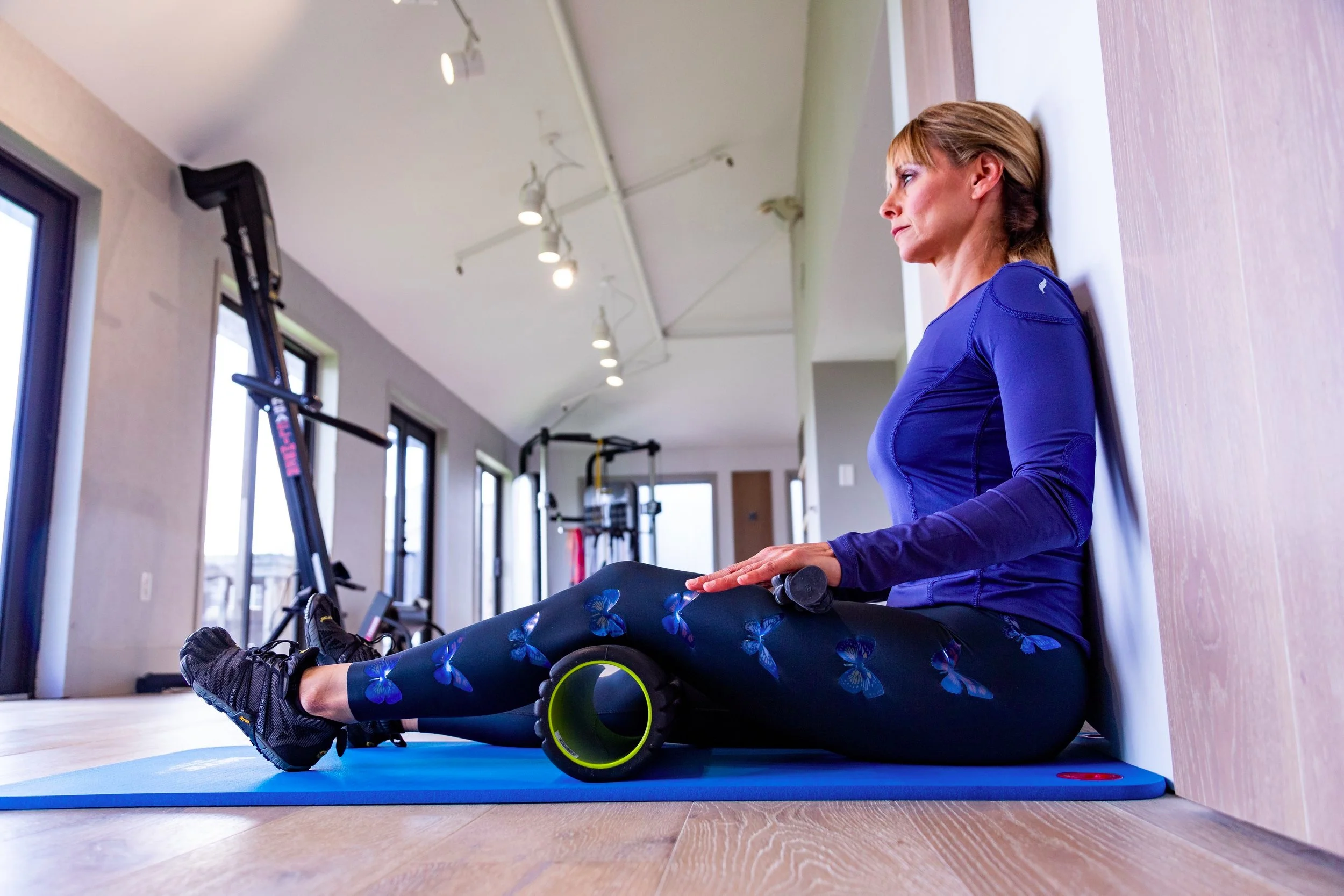
Very few dislike the idea of being rubbed. Even our pets seem to fall trancelike to calm strokes. The idea of massage has always been relaxing, even deep tissue, and now we understand why. When muscles become tight with strain they don’t receive the same blood flow. This loss means that when the heart pumps emphatically, as it does during exercise, these muscles lose influence and cause misalignment. Foam rolling is the only defense against the effects muscle imbalances have on movement.
People grimace at the idea of paying for weekly massages because of the out of pocket expense. But myofascial release is necessary, and self-massage is one of the most effective tools in anyone’s arsenal. The science of myofascial release has expanded over the past decade to include much more than foam rollers. Surface area matters, which means conventional foam rollers don’t work well on smaller muscle groups like the calfs, hamstrings, erector group, and upper body muscles. Those muscles will need the smaller surface area that sticks, lacrosse, and softballs apply. Just about anything hard can apply pressure to a muscle in need of release and self massage not only strengthens the fingers, but also creates tremendous self-awareness. Sense of touch and finger strength are vital components of regular functioning.

Clavicular Pectoral Release
The use of these tools still remains opaque as most experience some form of discomfort when rolling. It’s important to know whether or not the pain is worth your time. Since everyone’s a mish-mash of muscles locked in short or long positions, each need a distinct intervention to correct. Short, or muscles locked concentrically, need to be foam rolled in the muscle fiber direction so it will grant length. Muscles locked long need sheer, or pressure against the fiber direction, so they can contract.
But rolling causes pain in both situations, which means foam rolling can produce pain with no gain. At Meso Fit Boca, we use muscle length testing to determine which muscles are locked either concentrically or eccentrically so we can weed out the dysfunction both cause. All muscles need to give equal length and breadth so they don’t cause compensation.
Muscles locked long or short are also locked out of collective movement and the brain has to take the path of least resistance to move around them. Limping is the brain’s way of eliminating any movement threatening further harm. But dramatic limps aside, gait assessment can also reveal mini limps that hint at misalignment somewhere in the body.
At Meso Fit Boca, foam rolling, or myofascial release, is an important part of every client’s program. Its enormous potential serves as the missing link between balanced length and strength. Inadequacies must be removed through techniques designed to restore the length <—-> tension relationship between all muscles. No exercise program is justified without measuring a client’s current capacity.
Meso Fit Boca uses myofascial release in accordance with the results of client assessment in order to:
Increase blood flow to over-tensed areas.
Gain momentary extensibility from muscles locked short, and contractile ability from muscles locked long.
Train the body to combat these imbalances and slowly remove them.
This technique is integral to getting out of pain or dysfunction and onto a more mobile life. There are several things to keep in mind. Exercise is adept at creating contraction under load. That load is either imposed by moving bodyweight against gravity, or using weights to influence gravity. Either way the brain needs to create both tension and release, so it’s imperative we learn how to shut muscles off while we work hard to turn them on.
Meditation, aroma therapy, passive and active myofacial release, and yoga, name a few of the ways to reconnect the brain to greater reach and to keep fascia hydrated. Releasing prior to exercise allows temporary movement from muscles locked short or long. Passive myofascial release is ideal for those who can’t stand the pain invoked by active release techniques. This is also an opportune time to practice mentally shutting muscles off, a necessity if greater body awareness is to be achieved.
Here, we seek complete relaxation of all muscles to prevent muscle guarding, which is tension created to protect from pain. In this way, myofacial release can be meditative and relaxing, two effects that combat the devastating effects of stress, both physical and mental.

Passive Release (rectus femoris)
Active myofascial release is what most people associate with foam rolling. It uses some measure of bodyweight and the positions are often difficult for those who assess poorly to get into. This is why we created passive techniques that are more user friendly and can be recreated easily at home. Active techniques are a progression and can be used in conjunction with passive techniques as long as pain is manageable and produces results.

Active Release (rectus femoris)
More intense progressions include movement in the most tender parts of the muscle. Be careful of numbness or tingling as this is a sign of pressure on a nerve.